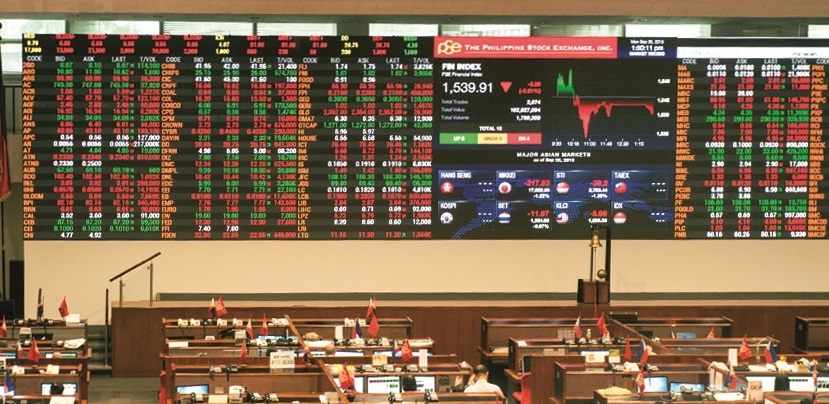Asia Economic Roundup: July 2016
12 Jul 2016
Without a doubt Britain’s decision to abandon the European project will be remembered globally as a wake-up call for political elites around the world. It seems the population chose to go against immediate economic interest and accept another financial turmoil in order to address deeply seated social and identity issues.

Although Asia’s exposure to the UK is relatively limited and this is not exactly a “Lehman Moment”, nonetheless we can expect a lively debate as policymakers in Asia look for an appropriate response to address the needs of vulnerable households.
Traditionally, the approach in Asia has been to address all social issues by delivering higher rates of economic growth. For some time now, the “Golden Rule” has been to target average annual growth of 4-5%. Delivering this same rate consistently is becoming a challenge as economies mature and advance.
Policy choices are quite familiar. The balance to be struck is between reliance on external trade and domestic consumption, between manufacturing and services, and, of course, between credit-fuelled growth and savings.
Based on the World Bank’s GDP growth outlook, the overall prospects for Asia remain upbeat. Developing countries in East Asia and the Pacific are expected to deliver 6.3% expansion in GDP in 2016, an enviable headline number by any advanced market standard.
However, as economic momentum continues to ebb and flow, policy makers in Asia are much less certain about their long-term future economic prospects compared to their ostensibly more challenged counterparts in Europe and the US.
Engaging selectively in monetary and fiscal stimulus, authorities in East and South-east Asia appear to be going through the same old playbook of policy responses whilst their sovereign and household balance sheets inevitably drift towards higher financial gearing and macroeconomic risk. For instance, household debt in Malaysia has reached 80% of GDP – rather high for a middle-income economy.
There is a sense that economic correction or outright crisis further down the road is somehow unavoidable unless a new economic path is discovered quite soon, which is a departure from the liberal form of capitalism imported into Asia during the post-war period.
Looking at this from a wider historical perspective, Asia is struggling to find an appropriate response to excesses of liberal capitalism that have resulted in one of the biggest financial upheavals seen eight years ago in the US. Another main issue is that growth has created significant income gaps in nearly all ASEAN countries.
Indonesia, a star performer in terms of economic expansion, now has one of the highest rates of income inequality in South-east Asia, according to the World Bank. Indonesia’s Central Statistics Agency (BPS) says the country’s Gini index – a ratio measuring wealth distribution on a scale of 0-1 – increased from approximately 0.36 in 2012 to 0.41 in 2014. An estimated 28m live below the poverty line.
The governments are therefore still very sensitive to price increases and are under pressure to maintain price subsidies for basic consumer goods such as fuel, rice and sugar. Though Indonesia removed fuel subsidies, some sources say they may have to be brought back once oil prices recover.
It remains imperative to deliver GDP growth, which is seen as synonymous with “wealth creation for the people”. However, rising inequalities, accumulation of bad loans and a limited social safety net continue to underscore Asia’s inherent vulnerability to a slow growth environment.
Put another way, the slowdown in growth that we are witnessing in Europe and the US is not an option for most of Asian governments. Economic expansion is part of its social contract.
As one Chinese businessman in Kuala Lumpur told me, “We cannot afford to relax and accept a slowdown. We have to save to send our kids to the best private universities and the best hospitals, and provide for our families. In Europe your governments pay for these luxuries.”
That presents a mighty dilemma to nearly all policy makers from Beijing to Kuala Lumpur, Jakarta to Manila, Singapore to Yangon. Should they continue trying to stimulate the economy to maintain historically high growth levels or expand the social net by distributing wealth more evenly?
The prevailing view for the last 50 years has been that in a capitalist system it is better to simply increase the size of the pie for everyone. Even the sovereign is in a better position to provide for its most vulnerable if the economy continues to grow.
This “addiction to GDP growth”, however, comes at a price and is beginning to see its limits. Most Asian sovereigns, notably China, have run up huge debts in pursuit of growth at any cost. The mighty shadow banking system and hidden debt could unleash a new emerging market crisis that we have not seen since 1997-98.
The time has therefore come for policy makers in Asia to exercise restraint in running up further debt and instead focus on investing in welfare institutions, taking some of the best role models from Europe.
For some time now there has been an emerging consensus that South Asian nations need to broaden their tax base and spend more on health and education as well as basic social benefits. On average, the tax base in ASEAN is below 20% compared to more than 40% in the EU. Consequently social expenditure tends to be under 10%. Despite efforts to broaden and deepen social protection, it is still spread quite thinly, with the sole exception of Japan.
There are valid arguments to resist creating a “crutch mentality| that has been a problem in countries that offer generous government handouts. Also, too much welfare can create formidable sovereign liabilities that are hard to reverse quickly.
Nonetheless, it seems that GDP growth as a substitute for more welfare is losing its appeal and most Asian leaders would do well to read the signals coming from more mature economies in Europe.
Whilst Asia cannot afford to provide social welfare on the scale that we have witnessed after the war in Europe, it must now come to terms that, left to its devices, liberal capitalism will leave its populations exposed to economic slowdown.
Want to know more? Read the rest of our reports on the Oxford Business Group website, or join in the discussion on Twitter with @kuncinas and @OBGinsights.
Recent Asia Infographics
Malaysia - Bringing Value Centre Stage
Sri Lanka - Island of Opportunity
The Philippines - 4 sectors to watch
Thailand - 4 Growth Areas to Watch
Myanmar - Transformation in progress
Featured Asia Analysis Articles
Maritime infrastructure system is critical to the Philippines economy
Myanmar's amendments to mining laws move forward
Thailand applies sufficiency economy philosophy to promote sustainable development
Malaysian aerospace industry sees surge in investment
Featured Asia Viewpoint
Covid-19 Economic Impact Assessments
Stay updated on how some of the world’s most promising markets are being affected by the Covid-19 pandemic, and what actions governments and private businesses are taking to mitigate challenges and ensure their long-term growth story continues.
Register now and also receive a complimentary 2-month licence to the OBG Research Terminal.
Register Here×